As applications grow more complex, testing becomes increasingly important to ensure they meet quality standards. Central to the testing phase is the creation of test reports, which serve to inform stakeholders about test results, guide decision-making, and drive product improvements. In this article, we provide insights about effective test reports using ReportPortal.
What is a test report?
It is a well-organized summary of all testing activities with detailed information about the tests performed, execution results, identified defects, and other critical aspects.
According to ISTQB glossary, there are two types of test report:
Test progress report (or test status report) – this report provides an ongoing update on the status of testing activities and includes the status of test operations in comparison to a baseline.
Test completion report (or test summary report) – this report is prepared at the conclusion of the testing phase and offers a comparison of the relevant test items with the exit criteria.
What is the objective of test report?
The purpose of the test report is to provide a clear picture of how well the software meets the specified requirements and whether it is ready for release.
The test report helps to evaluate the overall health of the project and identify any critical defects.
It also acts as a historical record of the testing procedure that may be consulted for similar problems in the future or for audits and projects.
Why do we need test reports?
This documentation is important for keeping everyone informed during the development process, especially in projects with multiple teams working together.
By recording any risks found during testing, test reports ensure that everyone is aware of any problems that could affect the software's performance or usability before it is released. Test reports also allow teams to adjust their testing strategies as needed. This contributes to ongoing improvement in development practices and overall product quality.
What is a good test report?
A good test report is easy to read, with sections arranged so readers can quickly find the information they need.
To create an effective test summary report, follow these steps:
Describe the scope of testing
Document test environment details
Report on defect status
Note insights
Report on the status of exit criteria
1. Describe the scope of testing.
Indicate which parts of the product were tested and specify any modules that were out of scope.
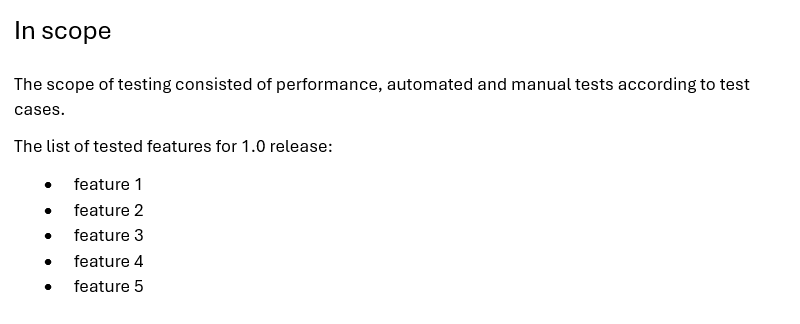
2. Document test environment details.
Include information about the hardware and software used, provide the application URL, and specify the database version.

3. Report on defect status.
Describe the total number of bugs, their status (open, closed, or in progress), and include its severity and priority to highlight critical issues.
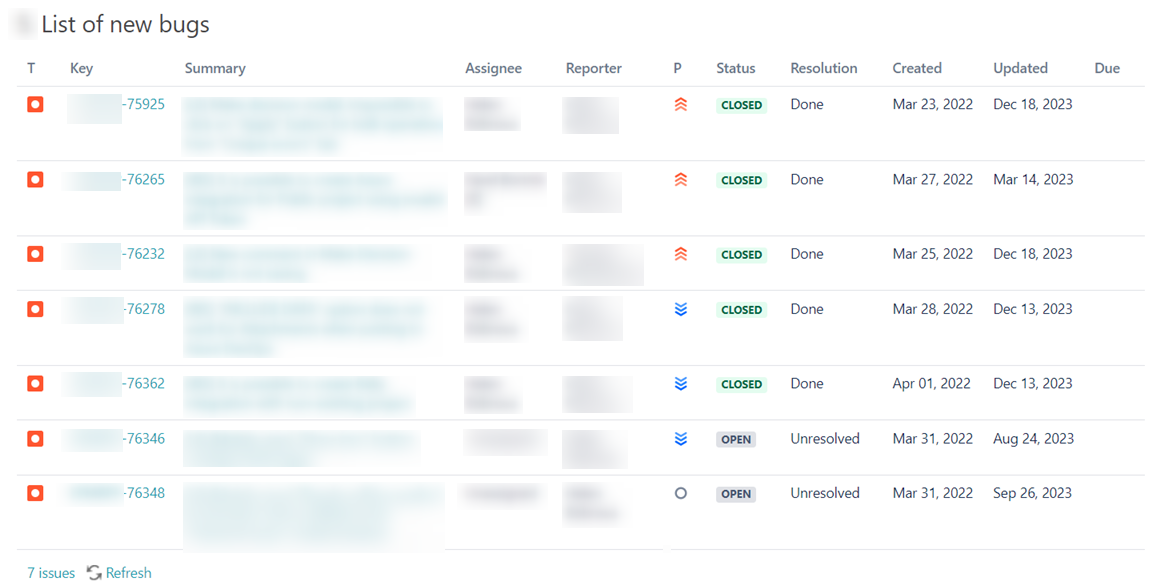

4. Note insights.
Document the challenges encountered and suggest ideas for improvement.

5. Report on the status of exit criteria.
Compare the results with the agreed quality gates, whether they passed or failed, and write the appropriate recommendations.

Types of test automation reports
In projects with automation, the automation test report can be included as part of the test summary report.
Our test reporting tool simplifies the creation of various types of test automation reports via widgets:
Summary report: an overview of test execution: tests run, passed, and failed.
Detailed test case report: specific details about individual test cases: status (pass/fail), execution time, and associated issues/errors.
Trend analysis report: the trends in test results over time.
Failure analysis report: the failed test cases and their details.
Execution history report: the historical data of test runs.
Including these detailed automation reports as part of the test summary report helps in presenting a thorough picture of the testing process, ensuring that all aspects of the application are evaluated.
How to do test report in ReportPortal?
Let’s create a summary automation test report. To build a dashboard and view an overview of test execution, follow these steps:
Add dashboard
Create Overall statistics widget
Create Launches table widget
Create Passing rate summary widget
1. Add dashboard.

2. Create Overall statistics widget.
This widget provides a summary of key metrics from your test runs, such as the total number of tests, passed, failed, and skipped tests, offering a quick overview of the current state of test results.
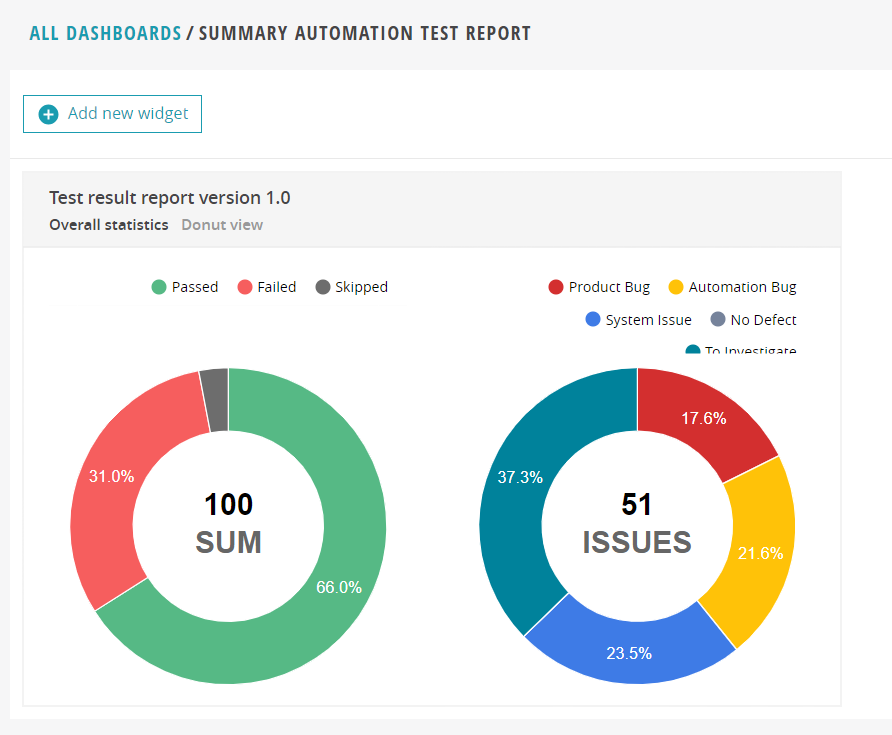
3. Create Launches table widget.
This widget displays a detailed list of test launches, showing key information like launch names, execution times, status (passed/failed), and statistics on test cases within each launch.
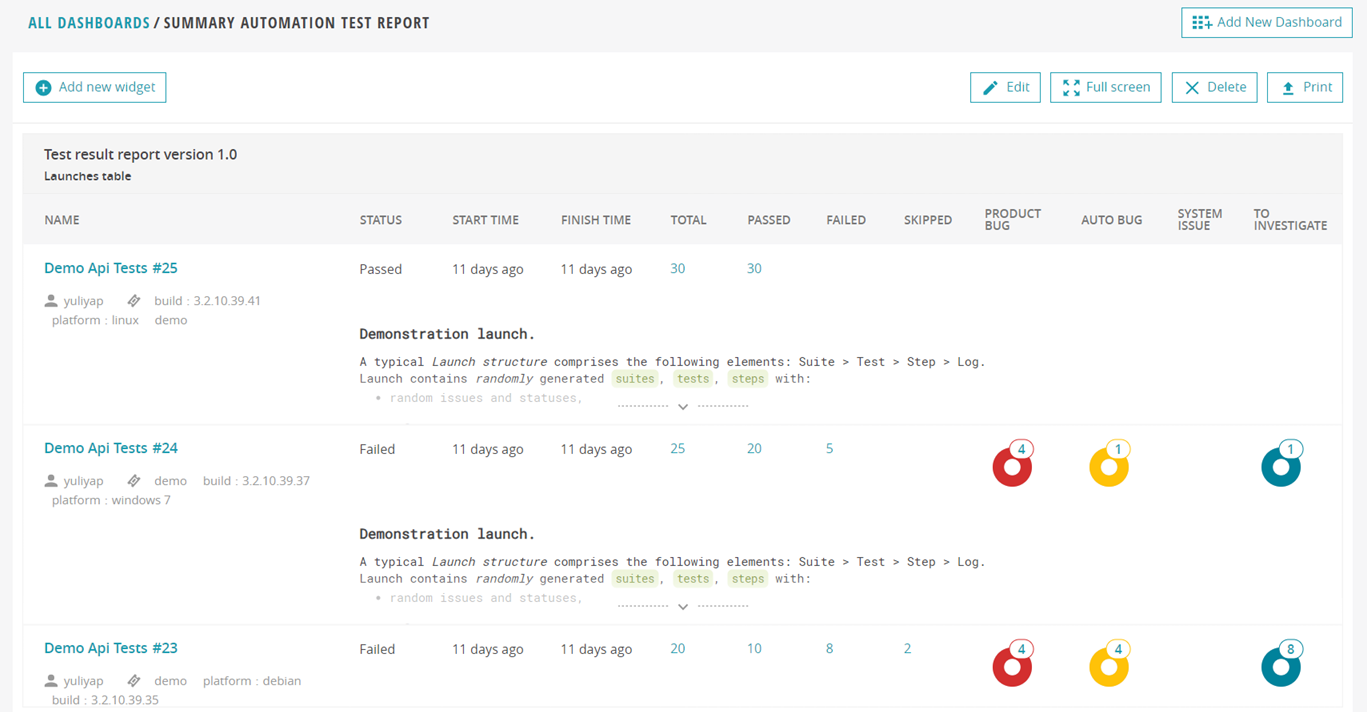
4. Create Passing rate summary widget.
This widget provides a concise overview of the success rate of test executions, showing the percentage of passed tests out of the total executed tests.
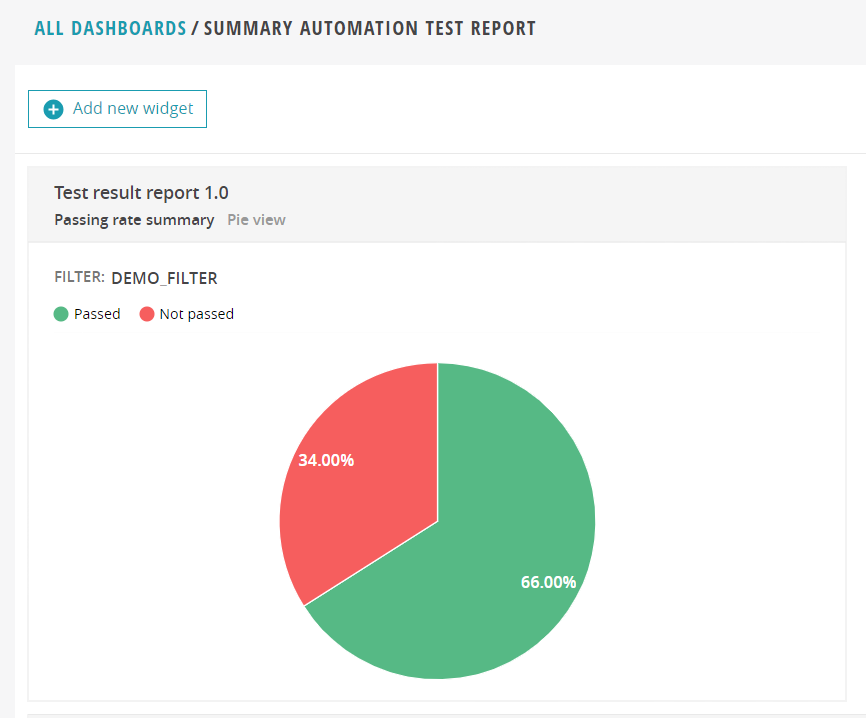
Using ReportPortal can streamline the creation of test reports, making the testing process more organized and efficient. By observing best practices in test reporting, teams can effectively monitor progress, pinpoint issues, and refine their testing strategies over time, resulting in better-quality software products. Additionally, you can create custom reports with test automation metrics using ReportPortal's widgets, allowing for tailored insights for your specific needs.